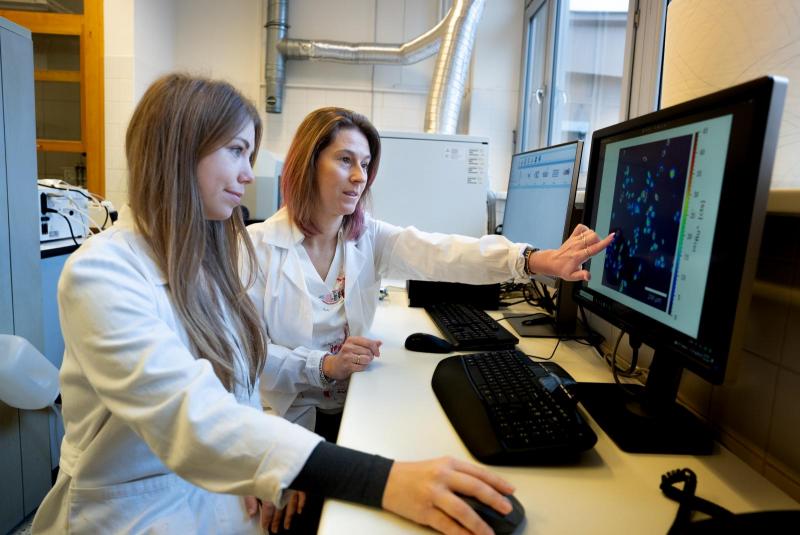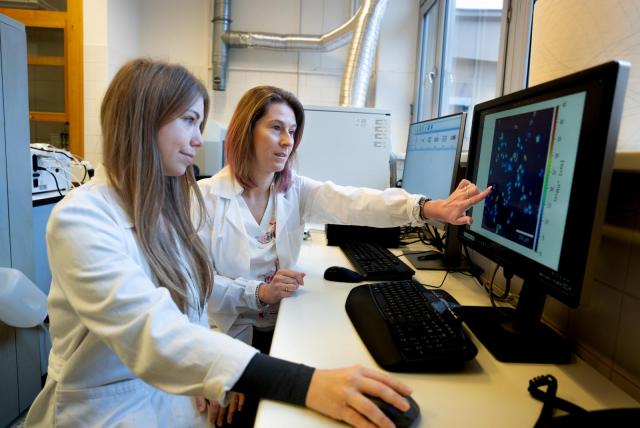A new approach to cancer treatment could enable individualized therapy for each patient
According to the World Health Organization, about one in five people worldwide suffer from cancer. In the Czech Republic, the figure is as high as one in three. The team led by Associate Professor Michaela Vašinová Galiová from the Institute of Chemistry and Technology of Environmental Protection at the Faculty of Chemistry (FCH), Brno University of Technology, is developing an analytical method that could significantly enhance cancer treatment effectiveness. Their goal is to implement this method routinely in research and therapeutic design. It enables scientists to rapidly determine whether a substance is suitable for treating a specific type of cancer while simultaneously providing information about how the substance interacts with cells. This could lead to personalized cancer treatment in the future, taking into account both tumor specifics and individual patient characteristics.

Chemical research is essential for cancer patient treatment because current medications are insufficiently effective and primarily target rapidly dividing cells, including non-cancerous ones. This often leads to numerous side effects that negatively affect patients’ quality of life. The future vision of the analytical chemistry team is personalized treatment tailored precisely to individual patients. Specifically, they aim to profile each patient, characterize their tumor and cell types, and apply medication based on these criteria.
The research is extensive, involving several leading teams. Method development and sophisticated techniques for characterizing cells and monitoring their changes after drug interaction are managed by the Institute of Chemistry and Technology of Environmental Protection at FCH BUT. The synthesis of organometallic compounds potentially serving as medications is overseen by Dr. Jindřich Karban’s team from the Institute of Chemical Process Fundamentals at the Czech Academy of Sciences. Preparation of cellular material and application of compounds into cells are conducted by experts from the Applied Molecular Oncology Research Center at Masaryk Memorial Cancer Institute, led by Associate Professor Roman Hrstka.
Accurate monitoring of medications within cells
The team led by Associate Professor Vašinová Galiová specifically focuses on finding suitable methods for rapid screening of new potential compounds, studying the kinetics of cellular mechanisms, and examining metalloproteins involved in cell defense mechanisms, crucial for understanding why some tumors do not respond to treatments.
The chosen method must fulfill three essential requirements. Firstly, it must handle material in situ, in a solid state without decomposition, allowing localization of analytes such as medications, particles, or metalloproteins. Secondly, it must detect extremely small quantities of substances. Drug amounts in cells are very low, typically less than 10% of the original dose. Increasing drug dosage indefinitely is not viable, as higher drug levels could cause adverse patient effects. The used technology can detect extremely small amounts, in the femtogram range (10^-15 grams), of active substances within a single cell.
From an oncological perspective, monitoring is not just about the drugs but also about changes in metalloprotein distribution in healthy and cancerous tissues. Regulation of these proteins affects the viability of both healthy and cancer cells. Thus, the third requirement was multi-element analysis.
All these requirements are met by the laser ablation method coupled with inductively coupled plasma mass spectrometry, enabling in situ multi-element analysis at the single-cell level. This approach provides information not only about how much substance is present in cells or tissues but also exactly where the substance is located. In the future, this method could become indispensable for both research and treatment design.
Collaborative research and future vision
Associate Professor Vašinová Galiová’s team aims to identify substances effective against cancer, optimize their targeted delivery, and understand their interactions with cancerous cells and their surroundings. Promising results have emerged from ruthenium-based metallocene compounds. As drug carriers, they are testing nanoparticles and naturally derived particles like exosomes.
Scientists must understand how these processes function throughout the entire organism. “We study numerous cancer types, such as breast, ovarian, and lung cancers. Even within one cancer type, different forms can vary significantly in resistance. We examine multiple cancer cell lines, administer specific drug quantities, and determine whether the drug enters cells and its localization. The goal is to attack cancer cell DNA to induce cell death. However, cells often resist and expel the drug. We need maximum drug entry into the cells and minimal expulsion,” Associate Professor Vašinová Galiová explains.

About 90% of cancer deaths occur due to metastasis rather than primary tumors, making continued monitoring essential even after apparently effective treatments. “We currently study substances aimed not only at killing cancer cells but also at preventing metastasis by reducing levels of crucial proteins involved in metastasis formation. These substances are under patent proceedings, and initial animal model experiments have begun,” adds Associate Professor Vašinová Galiová.
PhD student Kristýna Bilavčíková, a member of the team, works on tracking chemotherapy drug behavior in cells using advanced instrumental analytical methods under Associate Professor Vašinová Galiová's guidance. She emphasizes the importance of mentorship: “I shaped my professional path upon meeting Associate Professor Vašinová Galiová. A mentor profoundly influences your development, professionally and personally, providing motivation and independence.”
Despite advancements, cancer treatment remains a complex challenge. Current research focuses on developing drugs to enhance treatment efficacy and improve imaging techniques for three-dimensional monitoring. Integrating artificial intelligence will also be vital, significantly enhancing data analysis and treatment design.
-jo-
| Published | |
|---|---|
| Link | https://www.fch.vut.cz/en//f96620/d267727 |
